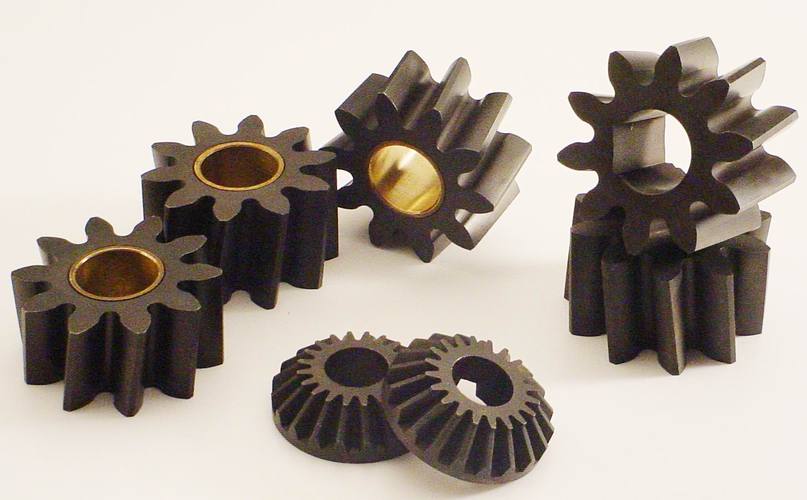Powder metallurgy is a process of manufacturing parts by pressing and sintering metal powders. The process can be subdivided into several basic steps: powder preparation, compression moulding, sintering and post-treatment. Compared to traditional casting or machining methods, powder metallurgy offers the following advantages.
- Material savings: Because there is virtually no cutting loss in the powder metallurgy process, material waste can be greatly reduced.
- High surface smoothness: the surface of the gears is relatively smooth, which generally reduces the need for subsequent processing.
- excellent performance: by adjusting the composition of the powder material and manufacturing process, better physical and mechanical properties can be obtained.
- Applicable to complex shapes: can produce complex structural parts, suitable for high-precision requirements of the gear.
I. Manufacturing process of powder metallurgy gears
- Raw material selection and powder preparation First of all, the selection of suitable metal base material is the key to manufacturing powder metallurgy gears. Commonly used metal powders mainly include iron-based powders (such as iron, alloy steel) and copper-based powders. In order to ensure the uniformity of particles and suitable particle size, the raw materials usually need to be finely crushed and graded. Mechanical alloying, aerosolisation and chemical reduction are common methods for preparing powders. Among them, the aerosolisation method is widely favoured for its productivity and product quality. In the production process, in order to reduce the friction in the pressing process and improve the moulding and processing effect, it is also necessary to add an appropriate amount of lubricant.
- Compression moulding In the press forming process, metal powder is placed in the mould and high pressure is applied. This process causes the metal powder particles to come into close contact and the preform gears are gradually formed. In this part of the process, it is necessary to ensure uniform pressure in order to avoid forming defects. The pressing force varies depending on the complexity of the gear. Simple gears may have a pressure of only 500 MPa, while complex gears may have a pressure of 800 MPa or even higher.
- Sintering Sintering is an important step in manufacturing powder metallurgy gears. The pressed gears are placed in a high-temperature furnace, usually heated to a temperature of 70% to 80% of the melting point of the metal, and held for a certain period of time to diffuse the plastic deformation of the powder particles, thus increasing the strength and toughness of the part. There are several key factors to control during the sintering process, including temperature, time and atmosphere. Different metallic materials and alloys require different sintering conditions. The choice of atmosphere is also important and is usually carried out in a hydrogen or inert gas atmosphere to avoid oxidation.
- Post-treatment and finishing Although the sintered gears already have basic mechanical properties, post-treatment is often required to further improve their wear resistance and strength. Possible post-treatment steps include
Heat treatment: Quenching and tempering are used to significantly increase the strength and hardness of the gear material.
Surface treatment: such as chrome plating and carburising to improve surface hardness and wear resistance.
Precision machining: such as grinding and electric discharge machining, to ensure that the gear dimensional accuracy and surface finish to meet the performance requirements.
Second, the advantages of powder metallurgy gear
- Improvement of material utilisation: there is almost no material loss in the production process of powder metallurgy, which can effectively reduce production costs.
- design flexibility: gear design can be more complex, to meet the needs of different applications.
- excellent mechanical properties: powder metallurgy gears are made of the same material, with better compressive strength, wear resistance and fatigue strength.
- shorten the production cycle: the traditional production process requires multiple procedures, while powder metallurgy can be completed in a relatively short period of time, improve production efficiency.
Third, application areas
Powder metallurgy gears are more and more widely used in industry, covering many fields:
- automotive industry: gears are an indispensable part of the automotive transmission system, powder metallurgy technology can improve its wear resistance and service life.
- machinery and equipment: many machinery and equipment involves gear transmission, to ensure the efficient and stable operation of the equipment. […] […]


